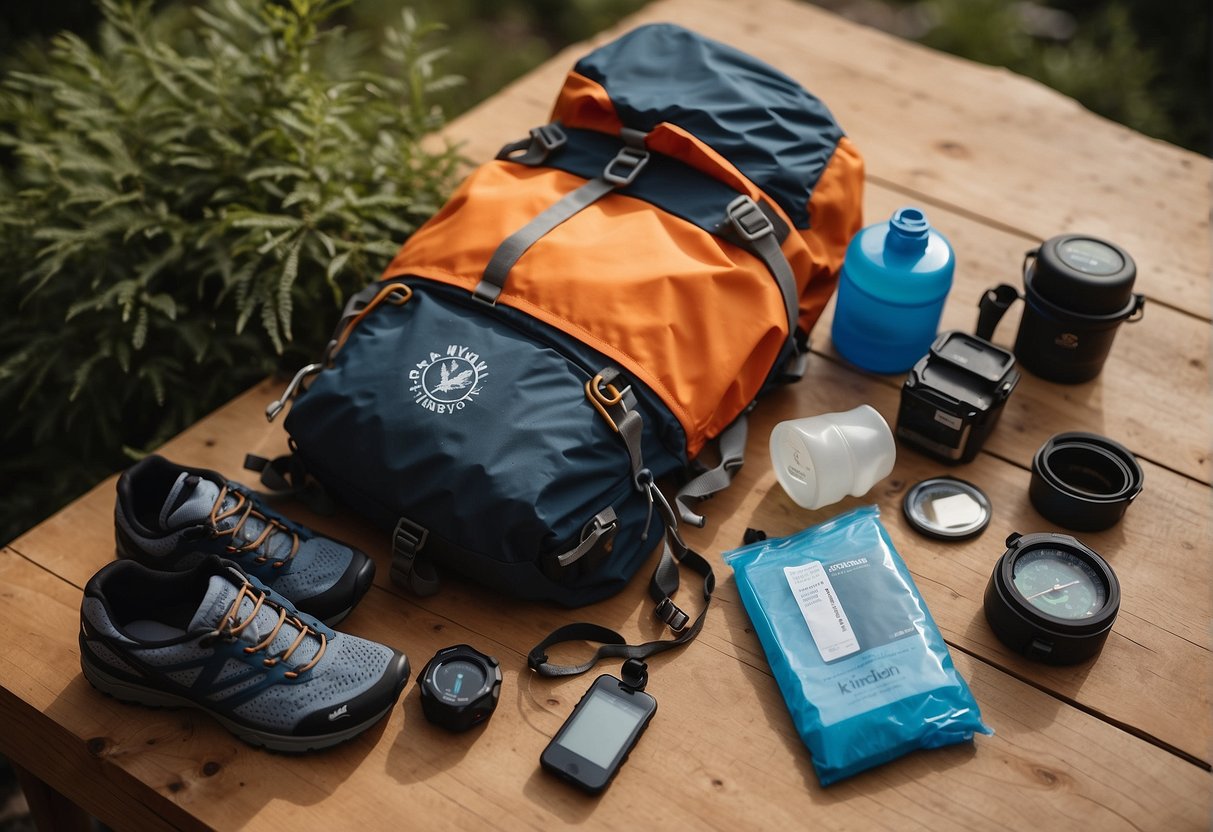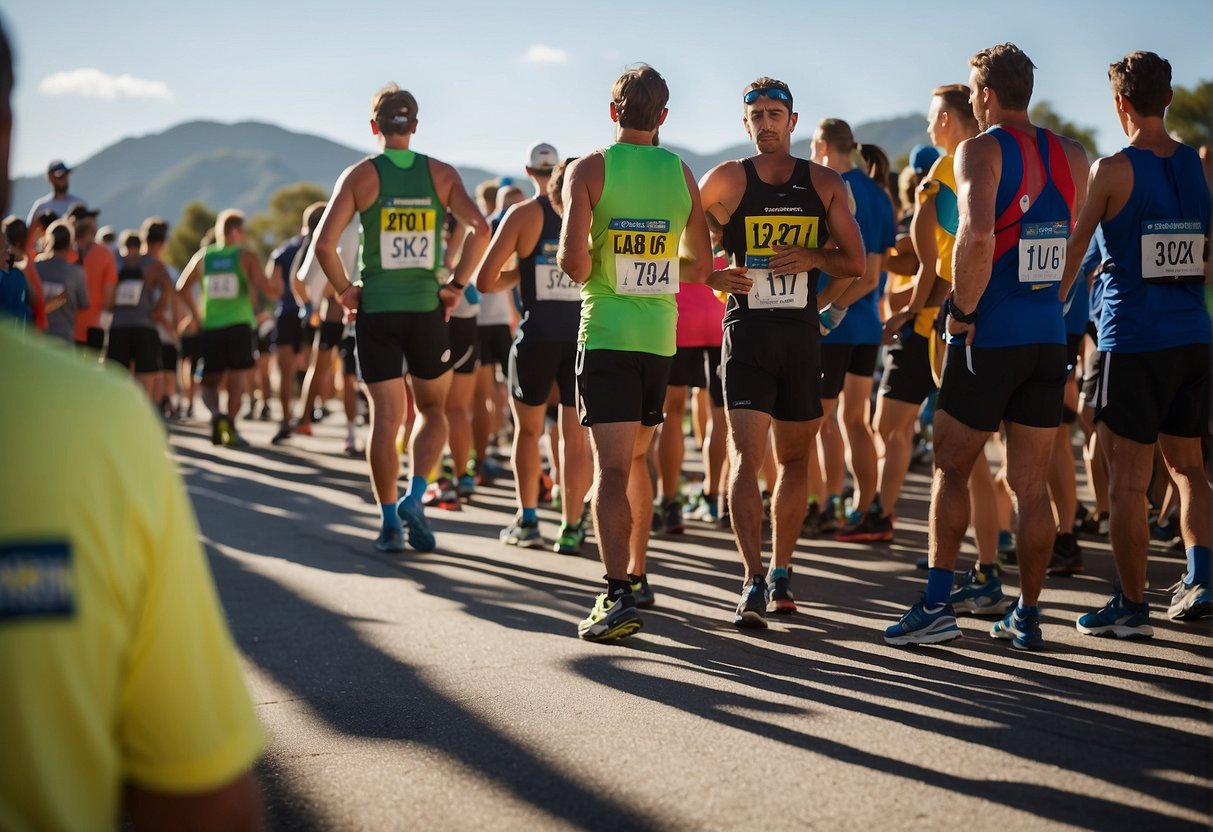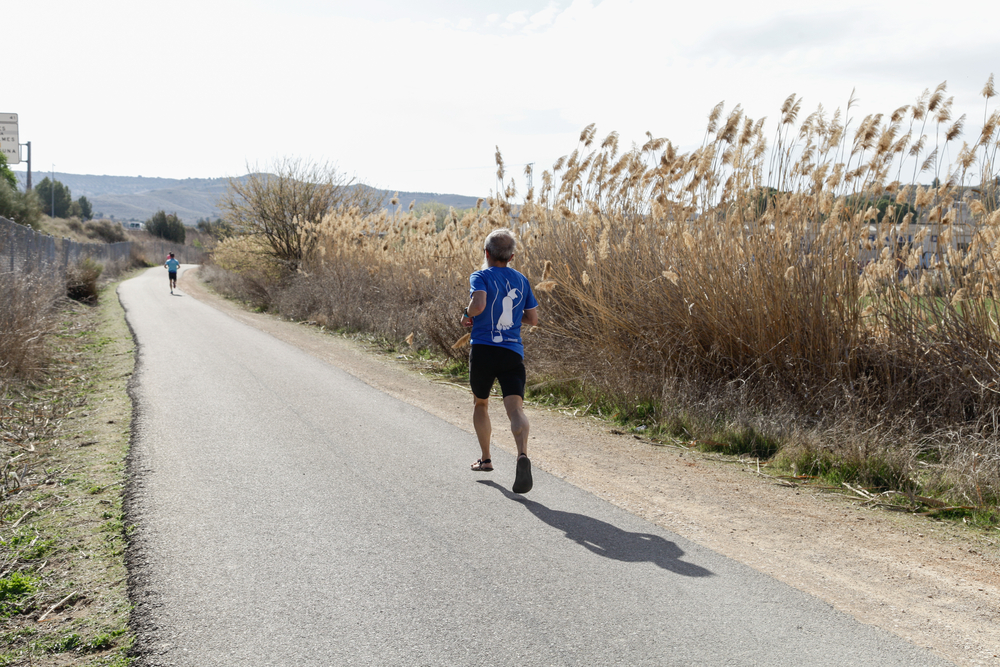A 50k race, often linked with ultramarathon events, is an endurance challenge covering a distance of roughly 50k in miles, or approximately 31.07 miles. While traditional marathons cap off at 26.2 miles, a 50k extends beyond, posing an additional challenge for long-distance runners. This type of race can occur on various terrains, but it is commonly associated with natural trails that add an extra layer of complexity and physical demand for the participants.

Understanding the conversion from kilometers to miles is straightforward: one kilometer is equivalent to about 0.621371 miles. Therefore, to convert 50 kilometers to miles, one multiplies the distance in kilometers by this conversion factor, resulting in the 31.07-mile measurement that defines a 50k race. This knowledge is essential for athletes preparing for such a race and bystanders and enthusiasts looking to grasp the magnitude of this athletic feat.
Training for a 50k demands a comprehensive plan that includes incrementally increasing one’s mileage, incorporating strength and conditioning routines, and implementing proper nutrition and recovery strategies. Runners who tackle this distance must prepare mentally and physically, understanding that completing a 50k is more than just an athletic endeavor; it’s a significant personal accomplishment.
Understanding Distances in Running

When it comes to running, comprehending the relationship between different units of length and how they apply to races is essential for runners of all experience levels to set goals and measure progress.
Metric and Imperial Units
Runners around the globe track their distances using either the metric system or imperial units. The metric system, which uses kilometers (km) and meters (m), is the official system of the International System of Units (SI) and is prevalent outside of the United States. On the other hand, the imperial units are often preferred in the United States, defining distance in miles (mi) and yards.
Conversion between these units is a common practice in running, and familiarizing oneself with the formula to multiply or divide for accurate conversions is crucial. For instance, converting kilometers to miles requires dividing the number of kilometers by approximately 1.609, while converting miles to kilometers involves multiplying by the same factor. Here’s a simple reference table:
| Kilometers (km) | Miles (mi) |
|---|---|
| 1 km | 0.621 mi |
| 5 km | 3.107 mi |
| 10 km | 6.214 mi |
How Long is a 50k in Miles?
The 50k is a renowned ultra-marathon that exceeds the standard marathon length of 26.2 miles or 42.19 kilometers. To understand how long a 50k is, knowing that it equals 31.07 miles (approximately 50 kilometers) is essential. This extra distance presents a considerable challenge that tests a runner’s endurance, pace, and age-related performance, along with the ability to tackle additional vert or climbing involved in such races.
Running enthusiasts often participate in 50k events on trails or roads, and these events usually require increased training volumes and a solid strategy for pacing and nutrition. For those familiar with marathons and looking to enter the realm of ultra-distances, this 50k Ultra Training Guide might be very helpful.
Training Essentials for a 50k

When approaching the challenge of a 50k, runners must create a structured training plan, incorporate specific workout types, and emphasize recovery and nutrition to succeed.
Building a Training Plan
A comprehensive training plan is the cornerstone of 50k preparation, especially for beginners looking to scale the distance. Such a plan should gradually increase weekly mileage and build endurance while preventing injury. Long runs are essential as they accustom the body to extended running time and conditions. Intermediate and advanced runners often include back-to-back long runs to simulate the fatigue experienced during a race.
- Sample Weekly Structure for a 50k Training Plan:
- Monday: Rest or cross-training
- Tuesday: Interval or speed work
- Wednesday: Mid-week medium-distance run
- Thursday: Strength training
- Friday: Active Recovery or Easy Run
- Saturday: Long run
- Sunday: Second long run (for advanced training)
Incorporating Speed and Strength Work
While endurance is key, integrating speed work and strength training enhances overall running economy and power. Tempo runs, hill repeats, and interval training contribute to improved performance on both road running and trail running terrains. Strength workouts, focusing on the core, legs, and arms, are essential for maintaining posture and reducing the risk of injury.
Importance of Recovery and Nutrition
Recovery is vital as it allows the body to adapt to the stress of training. Adequate sleep, rest days, and nutrition rich in calories, proteins, and carbohydrates support healing. Hydration strategies should be practiced during training to ensure proper fluid intake at aid stations on race day. Eating a balanced diet and maybe even consulting with a nutritionist can provide the energy needed for lengthy training for a 50k race.
- Key Nutritional Considerations:
- Carbohydrates: Vital for energy stores
- Proteins: Essential for muscle repair
- Fats: Needed for longer-duration exercises
- Hydration: Monitoring intake before, during, and after runs
Selecting appropriate gear to withstand varying weather conditions is another aspect of training preparation. Using gear during training that’s similar to what will be used on race day, especially shoes and hydration systems, ensures there are no surprises.
Race Day Strategy

A solid race day strategy for a 50K involves tailored pacing, strategic hydration, terrain navigation, and ensuring mental and physical preparedness. Each aspect uniquely contributes to achieving a successful and satisfying finish.
Pacing and Hydration
One should establish a steady pace early on that reflects their training and their race goals. It’s critical to check the pace frequently during the first few miles and adjust accordingly to avoid starting too fast and risking burnout. Adhering to a slower pace on hills and a comfortably quick pace on flat courses can conserve energy for the race’s later stages.
Hydration requires just as much attention as pacing. Runners should plan to drink fluids at regular intervals, considering the weather conditions and their sweat rate. It’s imperative to use drinks tested during training to avoid gastrointestinal issues.
Navigating Terrain
The terrain of a 50K can vary from road to trail, with each having distinct challenges. When tackling a technical trail, one should concentrate on maintaining a sure footing to prevent falls, which means sometimes accepting a slower pace. On hilly courses, a runner must manage their effort on the inclines to save stamina for the entirety of the race.
Careful planning is necessary to ensure headlamps or lighting is available if the race starts early or finishes late, ensuring visibility on the trail.
Mental and Physical Preparedness
Mental toughness and physical strength are pivotal when facing the daunting task of a 50K race. Runners should practice mental resilience through visualization techniques and setting manageable race day goals. Understanding and committing to the long-term effort required is imperative for physical and mental preparedness.
Physical strength will carry a runner through the race’s demands, but mental resilience will keep them moving forward when challenges arise. A runner’s commitment to their training, race strategy, and adaptability to conditions is what will ultimately help them cross the finish line.
From Marathon to Ultra: Transitioning to a 50k

To move from a marathon to an ultramarathon, such as a 50k, entails careful planning concerning increased mileage and adapting equipment and apparel for the prolonged effort and varied terrain.
Adjusting Mileage and Effort
A successful transition from a marathon to an ultramarathon involves gradually increasing weekly mileage. As runners embark on 50k training, it’s essential to add miles and focus on time on feet to build endurance. Experienced marathoners often already have a strong mileage base, which should be augmented with additional long runs that can include periods of walking, especially on challenging terrain. Rest days and active recovery sessions are vital to avoid injury and maintain a runner’s fitness level.
Beginner to intermediate runners making this leap should consider a conversion factor to safely increase their total weekly mileage by no more than 10 percent each week. Advanced runners might aim for higher mileage while incorporating more strength training and trail running if the ultra-marathon event involves off-road conditions.
Equipment and Apparel Considerations
Selecting proper running shoes is crucial for an ultramarathon, especially a trail 50k, as they experience different terrain than a typical road marathon. Shoes designed for ultramarathons often feature more cushion and grip to manage the rigors of trail running.
In addition to footwear, runners should reassess their apparel choices. Clothing should accommodate longer time on feet and fluctuating heart rates resulting in variable body temperatures. Incorporate materials that wick moisture and pieces that are easy to remove or add as conditions change.
For logistics on the course, ultra runners must consider the capacity to carry water, food, and emergency supplies – something that’s less of a focus in marathon running. Lightweight hydration packs or belts that do not hinder movement are essential for maintaining energy levels during the extended effort without relying solely on aid stations.


